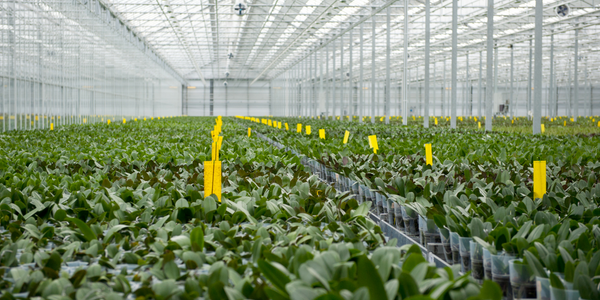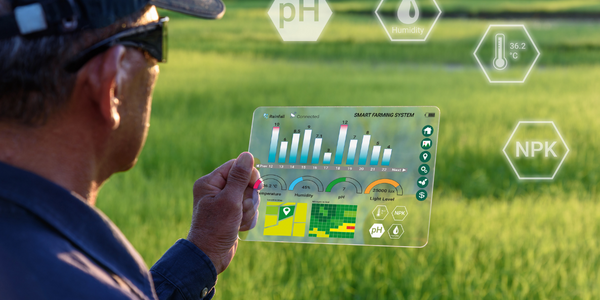Download PDF
Southern States Cooperative Uses Alteryx to Improve Direct Mail Response Rates and Gross Margins
Technology Category
- Analytics & Modeling - Predictive Analytics
Applicable Industries
- Agriculture
- Retail
Applicable Functions
- Sales & Marketing
Use Cases
- Predictive Replenishment
- Demand Planning & Forecasting
Services
- Data Science Services
The Challenge
Southern States Cooperative, a large farmer-owned cooperative in the United States, wanted to optimize its marketing efforts, particularly its high-value direct marketing activities. However, the company faced significant challenges. It lacked a way to consolidate customer and marketing data from multiple sources across the company for analysis. It also lacked sophisticated tools to drive marketing analytics, relying instead on generic productivity tools like Microsoft Excel. This lack of access to relevant data meant that direct mailings were not targeted effectively, leading to unnecessary expenditure.
About The Customer
Southern States Cooperative, founded in 1923, is one of the largest farmer-owned cooperatives in the United States. It is owned by more than 300,000 farmer-members and purchases, manufactures, and processes feed, seed, fertilizer, farm supplies, and fuel. The cooperative serves more than 1,200 retail locations in 23 states and sells products to farmers and rural American customers. The company enjoys strong customer loyalty and high brand recognition among agricultural professionals.
The Solution
In 2011, Southern States Cooperative chose Alteryx Analytics to improve the company’s access to critical customer and marketing data and rapidly build the analytics required to drive further improvements in its marketing success. One of the key selection criteria was the Alteryx solution’s unique ability to drive sophisticated analytics that include spatial capabilities. Alteryx enables even those without a strong technical background to unlock business and technical data to improve their decision-making. Using Alteryx, Southern States Cooperative now has dozens of analytics applications to make better business decisions across the company. To optimize its marketing efforts, Southern States Cooperative relies heavily on the predictive analytics tools within Alteryx.
Operational Impact
Quantitative Benefit
Related Case Studies.

Case Study
Intelligent Farming with ThingWorx Analytics
Z Farms was facing three challenges: costly irrigation systems with water as a limited resource, narrow optimal ranges of soil moisture for growth with difficult maintenance and farm operators could not simply turn on irrigation systems like a faucet.

Case Study
Greenhouse Intelligent Monitoring and Control Solution
Farming Orchids is the most successful form of precision farming in Taiwan, and also the most exported flower. Orchids need a specific temperature and humidity conditions to grow and bloom, and its flowering time may not be in line with market demands, so the price collapses when there is overproduction. Therefore, some farmers began to import automated greenhouse control systems for breeding and forcing, which not only improves quality, but also effectively controls the production period and yield to ensure revenue. In 2012, an orchid farmer built a Forcing Greenhouse of about 200 pings (approximately 661 Square Meters) in Tainan, Taiwan. The system integrator adopted Advantech’s APAX-5000 series programmable automation controllers to build the control platform, coupled with Advantech WebAccess HMI/SCADA software, to achieve cloud monitoring. The staff of the orchid field can monitor important data anytime via smart phone, iPad, and other handheld devices, and control the growth and flowering conditions. System requirements: In the past, most environmental control systems of orchid greenhouses in Taiwan used PLCs (Programmable Logic Controller) with poorscalability and control, and could not be connected to the Internet formonitoring from the cloud. For advanced database analysis and networking capability, the PC platform must be adopted. Therefore, PAC Systems (Programmable Automation Controller) with both PLC programming capabilities andPC functions is a better choice.The environmental control of the Orchid greenhouse switches on and off devices like fan, shade net, cooling/heat pump, liquid flow control, water-cooling wall etc. It is controlled by a control panel of electric controllers, and is driven by a motor, to adjust the greenhouse temperature, humidity, and other environmental conditions to the set parameters.

Case Study
Improving Production Line Efficiency with Ethernet Micro RTU Controller
Moxa was asked to provide a connectivity solution for one of the world's leading cosmetics companies. This multinational corporation, with retail presence in 130 countries, 23 global braches, and over 66,000 employees, sought to improve the efficiency of their production process by migrating from manual monitoring to an automatic productivity monitoring system. The production line was being monitored by ABB Real-TPI, a factory information system that offers data collection and analysis to improve plant efficiency. Due to software limitations, the customer needed an OPC server and a corresponding I/O solution to collect data from additional sensor devices for the Real-TPI system. The goal is to enable the factory information system to more thoroughly collect data from every corner of the production line. This will improve its ability to measure Overall Equipment Effectiveness (OEE) and translate into increased production efficiencies. System Requirements • Instant status updates while still consuming minimal bandwidth to relieve strain on limited factory networks • Interoperable with ABB Real-TPI • Small form factor appropriate for deployment where space is scarce • Remote software management and configuration to simplify operations

Case Study
Enabling Internet of Things Innovation in Agriculture
DigiBale, wanted to apply technology know-how and IP from implementations successfully to more agriculture sectors including cotton, forestry, sugarcane and cattle. However, farmers and growers still have worries about the connected technology.







